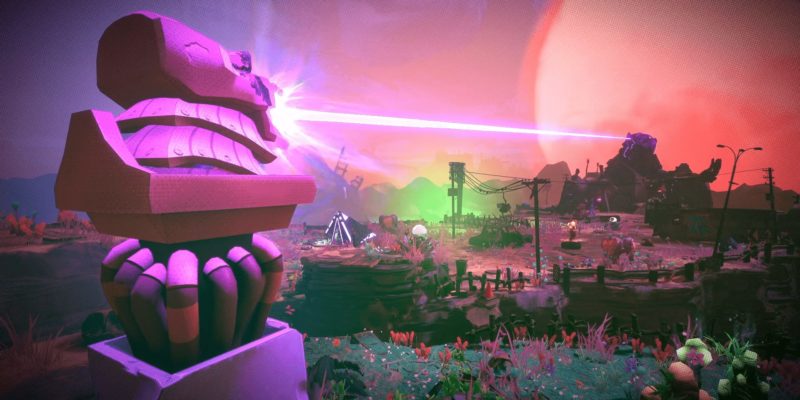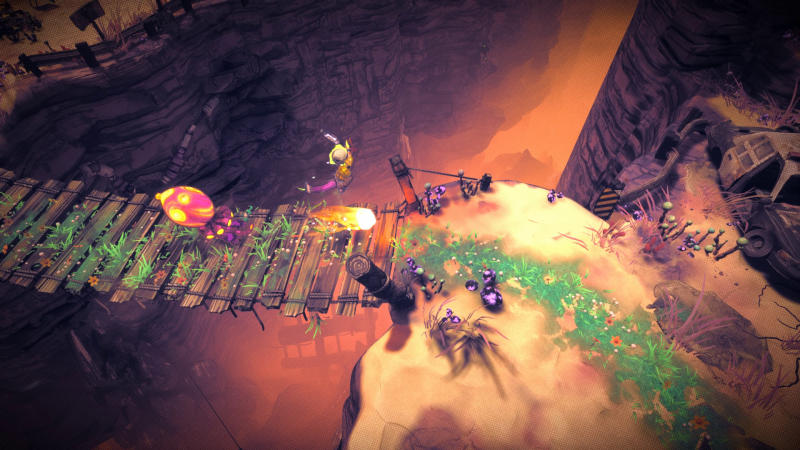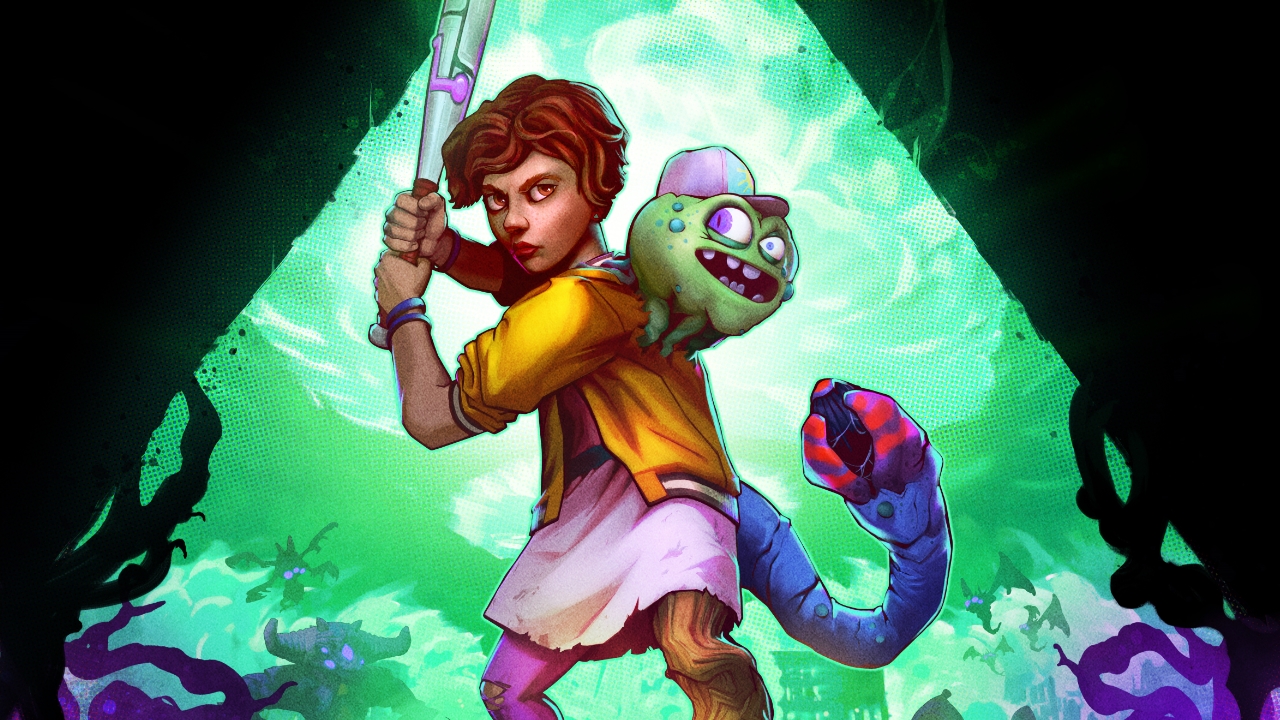
@onemyke
There’s a couple of questions that you can’t help but to ask when another roguelike comes out: what’s going to make this different from the other hundreds of games in the genre and why are we going to care? For RAD the answer to both questions this time is two words: Double Fine. The now Microsoft exclusive studio teams up with Bandai Namco for one of their last non-exclusive titles and its nothing like anything they’ve made before.
RAD may seem like just another roguelike on paper, but because of a lot of solid design choices, and a pinch of that Double Fine charm, there’s a lot to roguelove here. One of the last bastions of humanity is running out the power that makes their post apocalyptic way of life more bearable, and in some ways downright viable, and it’s up to you and your trusty bat to scour the wasteland to find more energy…
The premise might seem as dour as every early aught’s dystopian zombie movie, but the tone seems to be everything but. Laden with 80s inspired synthwave music (that sometimes feels like deliberate soundalikes to Van Halen or A-Ha), Cronenberg-esque enemies, and Warriors-esque character archetypes, Double Fine leans into that era’s tropes and flips it with their playfully geeky sense of humor. A bombastic narrator plays announcer for your every move, mining giggles with simple call-outs whenever you pause, collect money (‘DINERO, SIMOLEONS, CASH, CHEDDAR), or even just perform some cool moves or mess up (‘JABRONI, CHICKEN SHIT).
The people in your dying town always have something clever to say as well, even changing up their dialogue when you’ve mutated into different disgusting forms. I once came back into town with my head mutated into a cobra and got a subtle ‘look who slithered into town’ and later returned with a gross mutated freak-arm to a punk kid telling me ‘I hope you don’t wipe with that arm’. It’s a simple touch, but thought out and added in tastefully — something that could be said about the gameplay itself.

Anyone that’s played a Nintendo game should be familiar with the sentiment of “easy to learn, difficult to master”, and RAD could be described no other way. The onboarding of the game is relatively painless: you’re given a bat, a mission, and a simple set of controls — go kill mutants and unlock nodes to progress through levels. The difficulty comes in the form of an ever escalating horde of enemies with different mechanics and a randomized selection of ‘mutations’ that power you up and give you different abilities.
The mutations are pretty much where RAD sets itself apart. After getting hit with enough radiation from enemies you’ve killed or plants in the wild, a body part on your character will morph in a way that’ll give you a leg up somehow. Toxic trails on your legs give you a sort of defense mechanism to leave behind for enemies following you, a flaming hand will let you throw fireballs, a cobra head will let you melee attack from a distance. The mutations are unique and forces you to switch up your combat strategy from just your standard dodge roll, melee with a bat, and repeat. You can get up to three mutations if you survive long enough — and so many factors in the game will make that ostensibly a roll of the dice.
From the main menu of RAD it’s clearly stated this is a game of ‘runs’. How far can you make it before you die? It’s all about currency, strategy, and quick wits. Although you’re going to have to start from the beginning if you’re taken out by muties, you aren’t always necessarily starting at scratch. Between levels you’re able to deposit currency that you can retrieve at ATMs spread out throughout the game and that save in your bank should you end a run. Any melee weapons you unlock from getting further and further into the game also stay with you in the armory and thankfully you can always save in between levels during a run.
The real crapshoot is that mutations are doled out at random. Do you love the cobra head? Sorry, you probably won’t get it for four more runs if you just had it. Hate the trap-type mutations? You’re just going to have to deal with it this run. While it doesn’t seem like any one mutation is extremely useless, certain ones will fit certain playstyles more and you’ll get to have that fun (?) anxiety of finally getting on a good run and hoping you’ll survive. Luckily, the runs start fairly easily and levels and enemies are procedurally generated — so you won’t be playing the same exact map every single time you have to start over. Unluckily, sometimes this bites you in the ass and you get a weird map where you’ll be running around more than you want trying to find where to go. Couple that with a set of mutations you aren’t the biggest fan of, and you’ll just be screwed. RAD walks a fine line between forcing you to step out of your comfort zone and be creative with a playstyle you normally wouldn’t employ, and just feeling like more of a game of chance.

It’s interesting that a company like Double Fine who specialized in point-and-click adventure games with fun narratives decided on a run based roguelike game, and yet they still manage to succeed in doing something completely off the wall and out of their wheelhouse. Depending on your sense of humor and aesthetic leanings, RAD could very well be a great intro into this genre although it probably won’t be considered one of the greats amongst its own contemporaries. Yet until we get the next Dead Cells, or even for DF fans — the new Psychonauts, RAD is totally… fine. 3.5/5 VHS Tapes.
-Myke Ladiona

